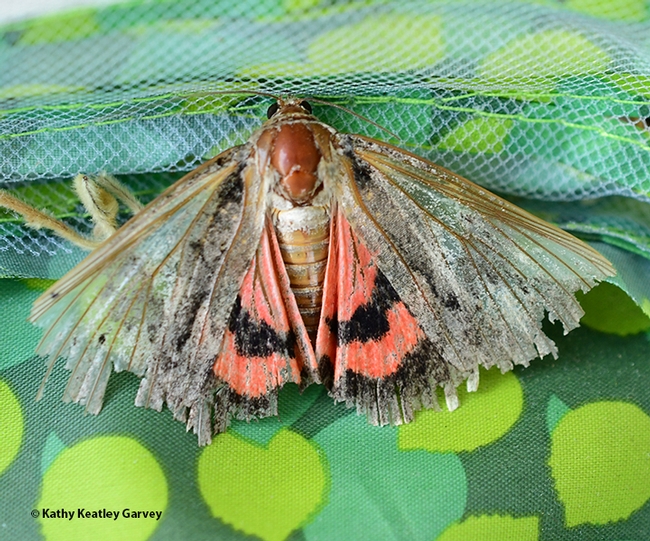You can be an understudy or you can be an underwing.
Or underfoot.
Have you ever seen an underwing, a moth in the family Erebidae?
Today one dropped out of a tree, landing on my feet in a Vacaville park. It just missed being a part of our National Moth Week celebration.
This one was both colorful and drab (see below). The species may be the sweetheart underwing, Catocala amatrix.
"Yes, too worn for certain ID," says butterfly guru Art Shapiro, UC Davis distinguished professor of evolution and ecology. "But certainly a Catocala--several species are common in creek-bottom habitats."
Lynn Kimsey, director of the Bohart Museum of Entomology and UC Davis distinguished professor of entomology, and entomologist Jeff Smith, curator of the Lepidoptera collection at the Bohart, noticed the tattered wings right away.
"I'd say it has a lot of mileage," Kimsey quipped.
It wasn't flying or fluttering, but dropping and hopping.
And sometimes you find it underfoot.
Interested in moths? Check out the Bohart Museum's home page to access videos about moths and butterflies by Smith and fellow Bohart associate Greg Kareofelas. Next year, if all goes well on the pandemic front, the Bohart may host a National Moth Night again.
Attached Images:
